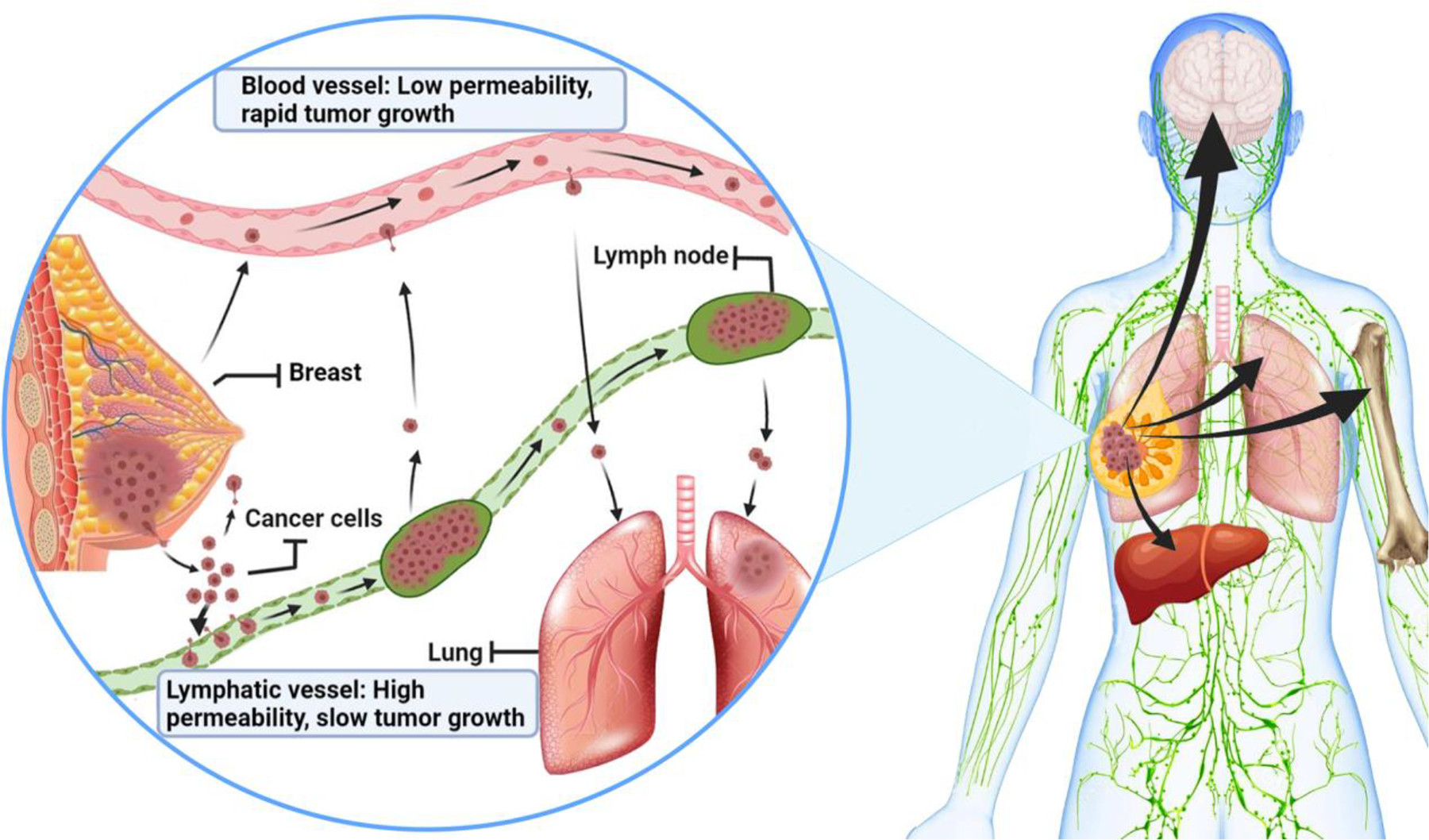Figure 1.

Metastasis of breast cancer cells and involvement of lymphatic and blood vessels. At metastatic stages, breast cancer cells are discovered in distant sites in humans: mostly bone, lung, brain, and liver (right). Recent discoveries in mouse models suggest that the local lymphatics and blood vessels are key players in the metastatic process (left) (Brown, et al., 2018; Pereira, et al., 2018). The cancer cells in tumor mass may first spread into adjacent lymphatic vessels and lymph nodes, which have high permeability for cancer cells but do not support rapid cancer growth. Cancer cells then spread into systemic blood circulation, which has low permeability but supports rapid cancer growth by delivering cells to distant sites to form nodules (such as metastatic lung nodules). Understanding this process helps the development of novel therapeutic strategies that can target cancer cells in lymphatics or in blood circulation.
